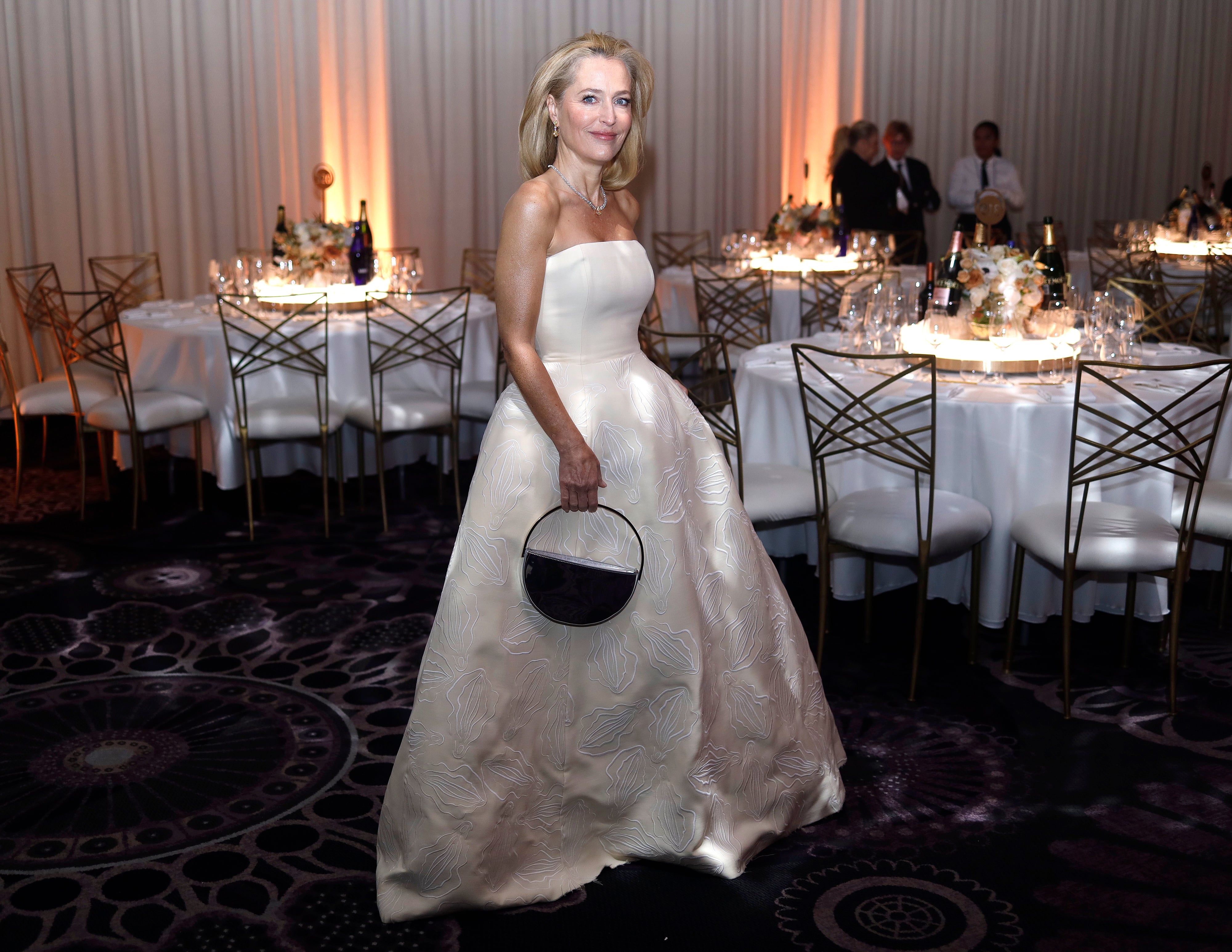Why Gillian Anderson’s ‘vagina’ dress at the Golden Globes was problematic
The ‘Sex Education’ star’s iconic gown sparked debate in all corners of the internet, writes Amelia Loulli. But there’s one important thing that nobody seems to be talking about...


Gillian Anderson has worn a dress embroidered with hundreds of “vaginas” to the Golden Globes ceremony. You’ve probably seen it by now – it is all over the internet. The beautiful dress, designed by Gabriela Hearst, took about 150 hours to embroider.
In an interview on the red carpet, an understandably thrilled Anderson shows off the dress, exclaiming that “it has vaginas on it”. Goddess bless Anderson and that dress. They’re both stunning. But can we please, for the love of a better world, get one thing settled here?
There are no vaginas on Anderson’s dress. Not one. Vulvas, yes. The dress is embroidered with hundreds of vulvas. But not vaginas. The vagina and the vulva are fundamentally different parts of the female anatomy with different functions.
The vagina is the internal passage connecting the womb with the outer genitalia, while the vulva is the global term given to everything on the outside – it’s the exterior, the gatekeeper for the uterus. Everything that makes up the female external genitalia.
Yet, in response to Anderson’s statement frock, the internet is ringing with the word “vagina”. I believe the words we use matter, so, I have to ask – why isn’t this significant difference between the basic parts of the female anatomy common knowledge? And why is it important to call out this kind of ignorance?
If you’re a woman you’re likely to have grown up with a basic misunderstanding (or just total lack of knowledge) regarding the correct words for your genitalia. For me, I was told I had a “fairy” – a “Tinkerbell” (yes, this did make watching Peter Pan with any other human beings quite uncomfortable for me as I grew older).
For me, what was beyond the vague notion of a Tinkerbell was anyone’s guess. There are thousands of other versions of this same pantomime that have been played out for decades and continue to form a part of the miseducation of our girls. Minky. Kitty. Fufu. Foof. Familiar to anyone? As part of my PhD research, I once spoke with a sexual assault referral centre nurse who described the delays and complications arising from a young girl’s disclosure of sexual abuse because they were using the euphemism “cookie”.
Using the wrong words facilitates the spread of misinformation in more ways than one. It is often understood, for example, that the vagina is self-cleaning, while the vulva is not. If people don’t understand the fundamental difference between the two, then you can see the issues being stored up here, since keeping the vulva clean can help to prevent vaginal infections.
The thing is, the words we use matter because the correct words lead to correct understanding, and understanding our bodies is the only way we can build a truly healthy relationship with them. Ultimately, having the correct words for things is a form of power, and the amount of cloaking and hiding and erasing we do to particular parts of our language can often be a good indicator of where we store our shame.
What it comes down to – ironically in the case of Anderson’s dress – is sex education. Most women who are now raising their own girls were not brought up to know or talk about their bodies accurately. But the thing is, if we as adults can get over our lack of information and embarrassment at using words that have seldom, if ever, crossed our lips (vulva, the labia majora, labia minora) – if we could find the strength to resist the lure of promoting the same infantilising language or misinformation we were fed throughout our childhoods and instead teach our young girls the correct words for their body parts – we can afford them the chance to grow up empowered. With a sense of knowledge rather than confusion – with a feeling of pride instead of shame.
This decision won’t always feel natural or convenient, but this is surely all the more reason to commit to it – the fact that the very accurate and natural language of the female body can sound so alien in everyday life.
I will never forget when I was pregnant with my third child and my then five-year-old daughter was asked by the lovely checkout lady at the till at Morrisons if she was looking forward to having a brother or sister. “And will Mummy go to the hospital to get the baby?”, the unsuspecting lady asked. “Oh no”, my daughter declared matter-of-factly, “it will be born through mummy’s vagina at home.” I was preparing for a home birth, so birth chat in anticipation of that had become everyday parlance in our house – not so much for this woman in Morrisons, who looked absolutely mortified to be hearing such a word on a weekday morning.
My daughter was right though. Her sister was born through the vagina – which, I’ll say it one more time for those of you who might have missed it, is the internal passageway that connects the womb with the outside world. It’s where babies are born through and where menstrual blood flows through. It’s different from the vulva. Vulvas are the external parts of the female genitalia, which adorn a certain, incredible dress that was worn recently to the Golden Globes ceremony. Now let’s celebrate how beautiful they are.






Join our commenting forum
Join thought-provoking conversations, follow other Independent readers and see their replies
Comments